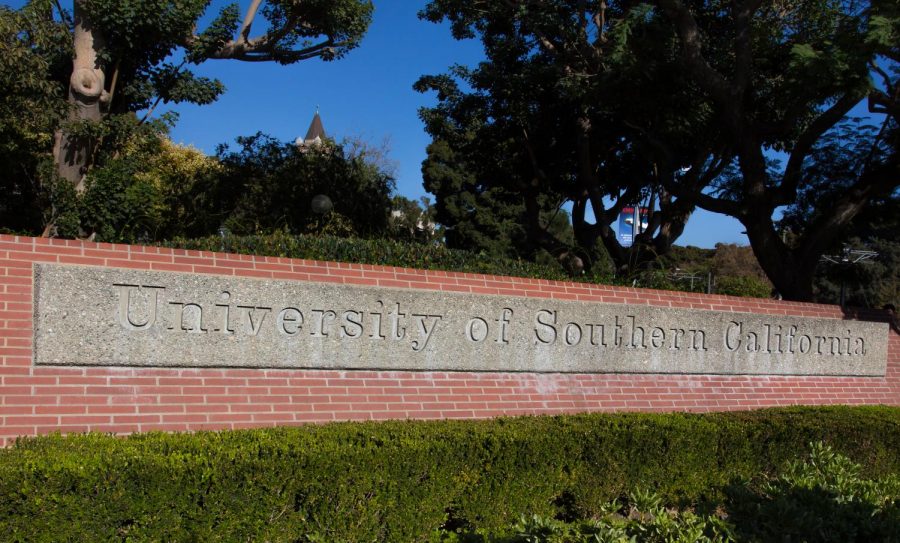One Year Later, the Largest Ever College Admissions Scandal Still Stings
March 12, 2020
One year ago today, the 2019 college admissions scandal broke, implicating dozens of well-to-do parents in perhaps the most egregious case of college admissions misconduct of all time. The scandal revealed not only corruption and advantages in the admissions process for wealthy, but also the lack of transparency in college admissions processes across the country.
Some of the tactics employed in the scandal, fittingly dubbed Operation Varsity Blues, were more brazen than others. In some cases, associates of William Singer, the mastermind of the scandal, photoshopped applicants’ faces onto the bodies of athletes. In other cases, Singer instructed parents to use medical documentation to get their children extra time on the SAT or ACT.
One student, the daughter of “Full House” actress Lori Loughlin, was admitted to USC as a nationally ranked coxswain, despite never having rowed crew in her life. How could so many colleges who pride themselves on their “holistic admissions processes” be so easily fooled?
To see if I could learn anything new about Vanderbilt’s admissions process, which, like most other elite universities, is largely secret, I looked at my own admissions file from 2018. To be clear, Vanderbilt was not implicated in the 2019 college admissions scandal, and an affidavit even confirmed that the university’s standards were too high to “hide” an unqualified student. Nevertheless, these standards are almost completely undisclosed to the public.
Under the Family Educational Rights and Privacy Act (FERPA) of 1974, college students have the right to view all education records maintained by the school they attend, including their admissions files. Colleges must provide records within 45 days of a student’s request. I requested my files earlier this semester in January, and I finally obtained a meeting to view them in March, just short of the deadline.
At my meeting, an employee at the Office of the University Registrar brought me into a dimly lit room and gave me 30 minutes to review my admissions files, where I was not allowed to take any notes or pictures. The files consisted of about two dozen papers, which mostly consisted of my entire Common Application and the education records screenshotted directly from my Your Enrollment Services (YES) page. At first, I laughed, seeing how I submitted my application on Jan. 1, the day of the deadline. But as I flipped through the papers, I was disappointed by the lack of new information. There were no notes on my transcript, no comments on my essay, and no acronyms to attempt to decipher.
Instead, there was one page – the last page of my files – that elucidated some of the hidden deliberations that take place in the admissions process. First, the page revealed that the admissions office scores applicants in four categories – Academic, Personal, School Fit, and Overall (a separate score, not an average). Blair School of Music applicants were also evaluated by a fifth Blair Audition Score. Although it wasn’t abundantly clear, it appeared that the Academic score accounted for 40% of an applicant’s admissions decision, while each other metric accounted for 20%.
Since I applied to Vanderbilt’s College of Arts and Science in 2018, it’s unclear whether these categories have changed since.
Second, I learned that admissions decisions take place over the course of four rounds. The first round, titled “Initial,” is led by an “Admissions Analyst.” My application was first reviewed on Jan. 11, 2018, and I received only an academic score, out of 1,000.
The second round, which took place on Jan. 12, was led by a separate “Admissions Officer,” and gave me scores for each category. Personal, School Fit, and Overall were all scored out of 500. Here, just one day after opening my file for the first time, the office labeled me a “rec admit.”
The third round of the admissions process, the “Sign Off” round, took place weeks later on Feb. 3. I was given new scores in each category, and again labeled a “rec admit.”
On Feb. 28, the fourth and seemingly final round of the admissions process which was called “Commando,” I was given no scores but labeled an admit for the first time.
After looking through my files for about 25 minutes, I thanked the office and left the room, disappointed by the lack of personal information but interested in the scoring categories that they provided. For one thing, Vanderbilt, like many other colleges and universities, employs practices like affirmative action and legacy preferences in its admissions decisions. Did these metrics mean that students were given numerical scores for their race, ethnicity, alumni relationship, among other things?
In Gratz v. Bollinger (2003), the Supreme Court struck down the University of Michigan’s practice of awarding underrepresented minorities points in their admissions decisions based on their race or ethnicity. How Vanderbilt accounts for ethnic and racial status in the context of the scores they give students is thus unclear.
The categories by which the admissions office scored applicants fell largely in line with the standards of other universities. However, the amount of information in my admissions files was discouragingly sparse, and the lack of info seemed to exceed what was provided. How did the office review my essay? What did my admissions officer think of my transcript? How would the office have known if I had falsified information on my application, like the dozens of parents ensnared in the scandal?
Despite commitments to promote diversity and holism in their admissions decisions, many elite colleges continue to give preference to students who already have advantages in the system. As the Harvard Crimson reported, Legacies and athletes who applied to Harvard’s class of 2000 were four times more likely to get in than other students. In the class of 2017, they were nine times more likely to get in, evincing a trend of unfairness in the process.
Equally important is the lack of transparency in college admissions for universities like Harvard and Vanderbilt. Transparency is important not only because it helps prevent bribery, cheating, and fraud, but also because it helps applicants who don’t have connections or insider knowledge. As UC Santa Barbara Professor Rebecca Zwick writes, “the less specific the demands of college gatekeepers, the more important the role of the candidates’ cultural capital.” While it might not ever be possible for most college applicants to attain the same cultural capital and advantages of the students embroiled in the 2019 scandal, an increase in transparency can help.








